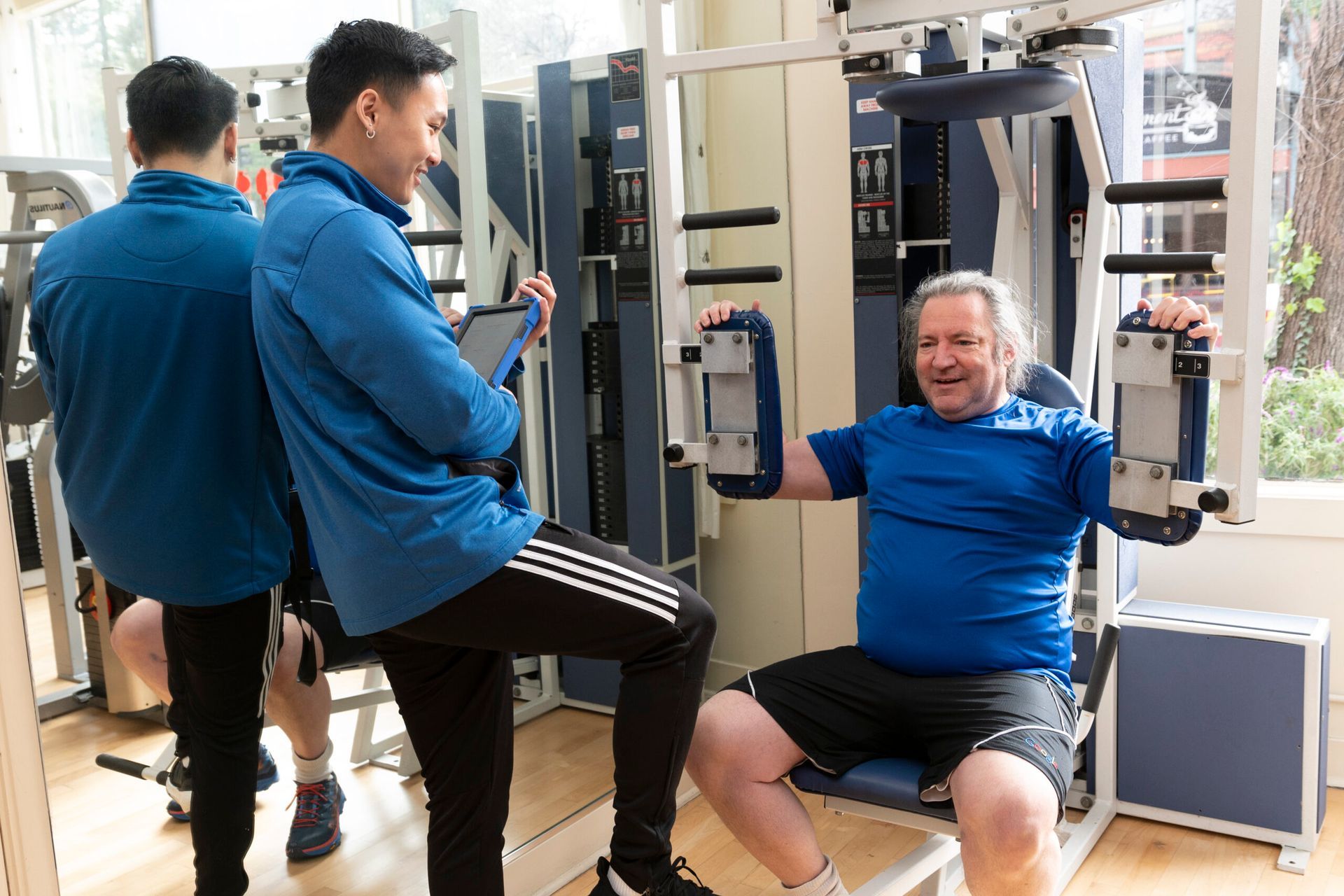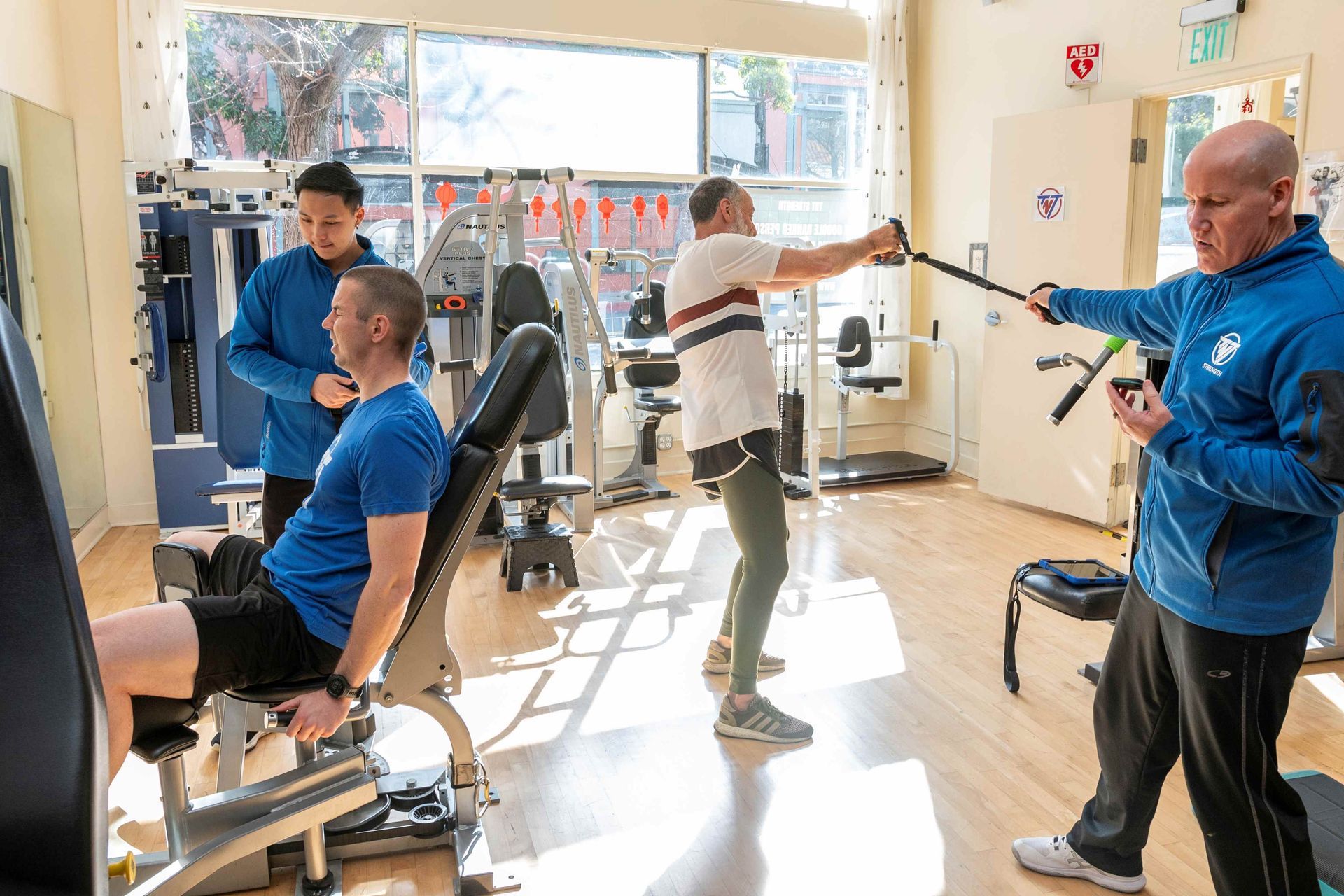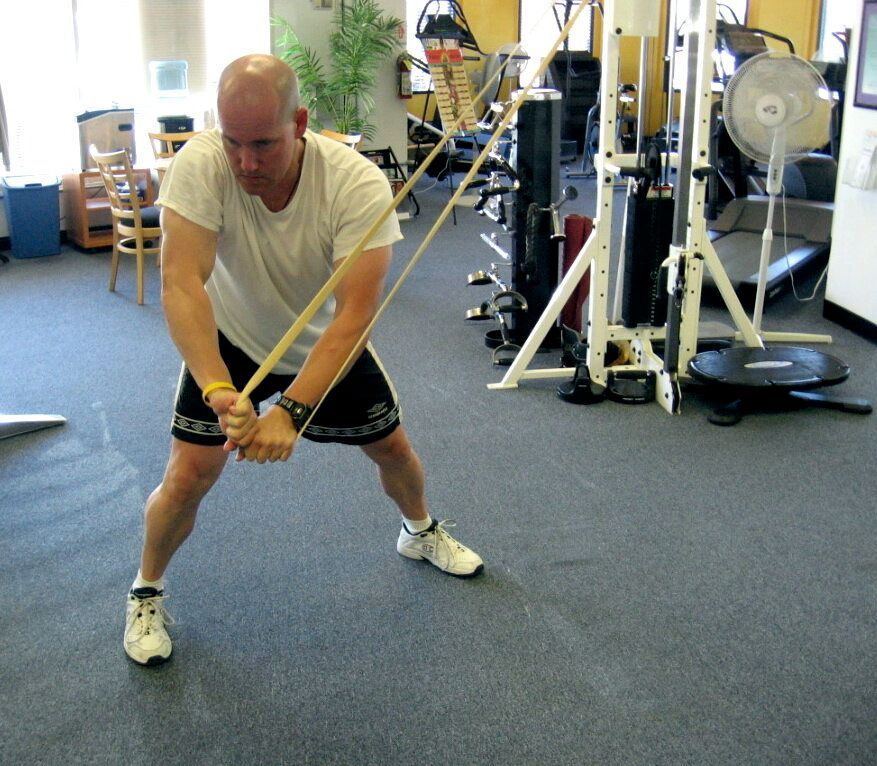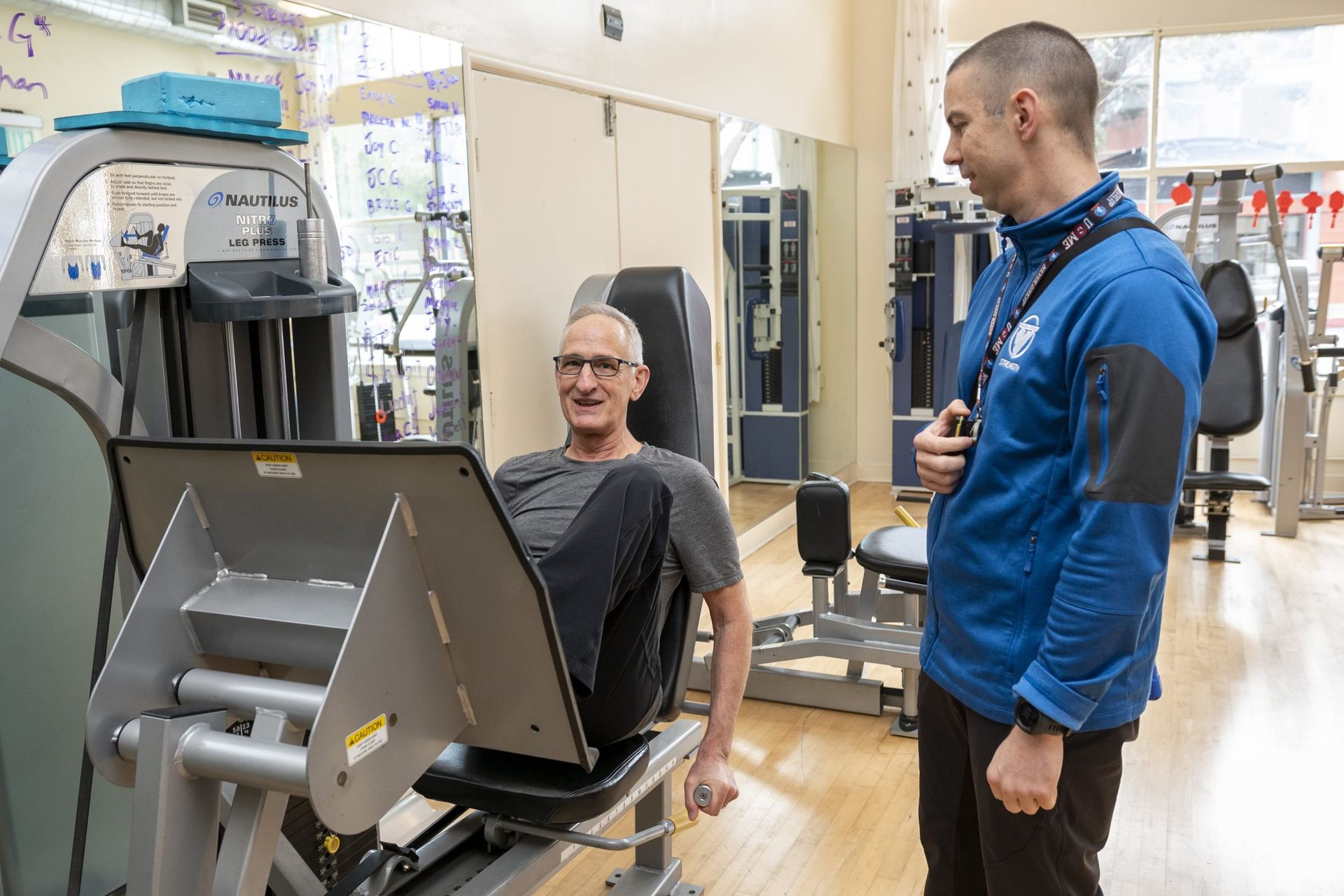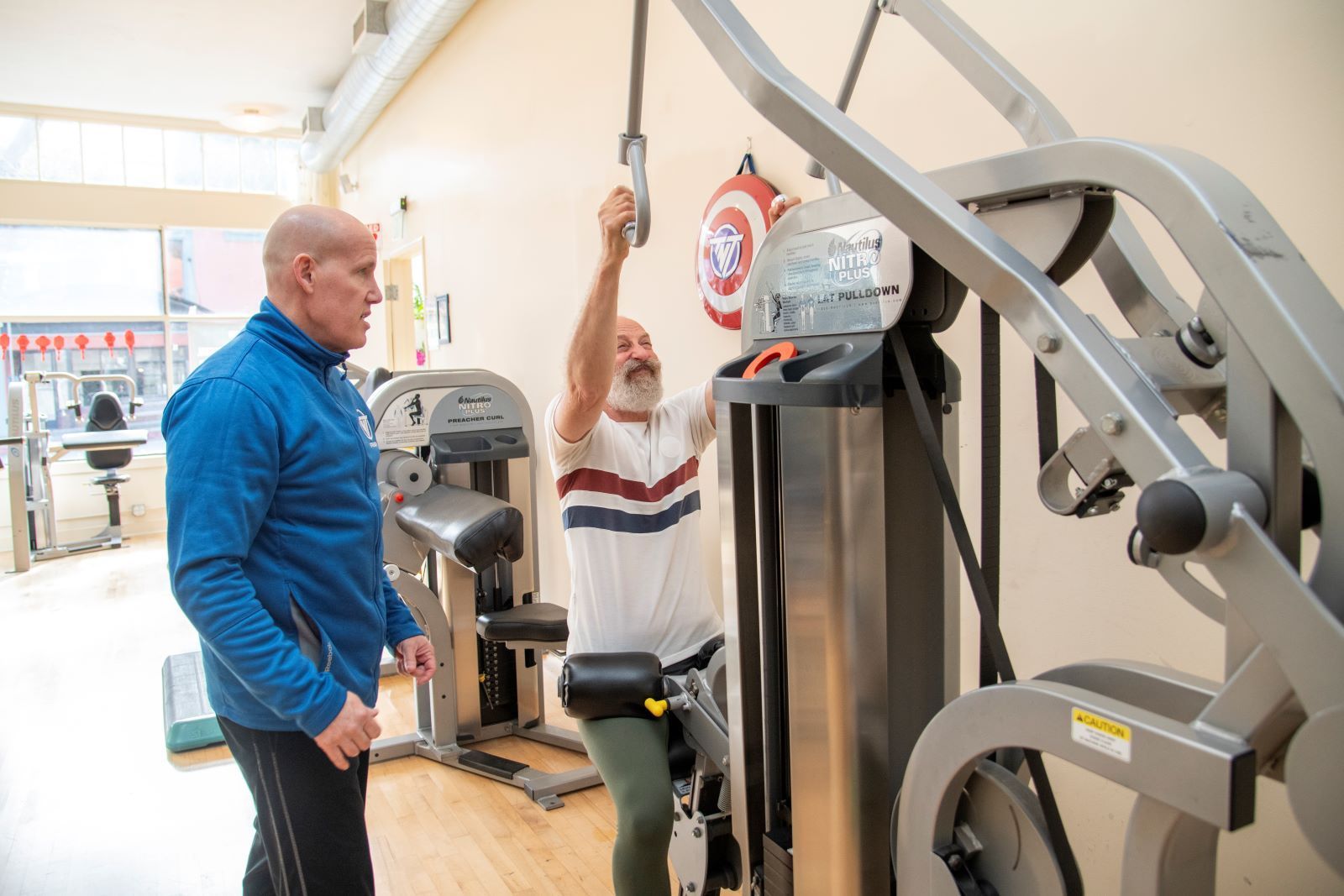START YOUR NEW YEAR’S RIGHT…
STRENGTH TRAINING FOR BUSY PEOPLE

Well it’s that time again…NEW YEARS!! One of the many things that occurs around this time of year is that people make plans to get fit. For all these good intentions, many people quickly give up on these plans, often because they feel they don’t have the time to dedicate towards this seemingly daunting task. If you are on of those people who feels they don’t have time to read this article, let alone set aside time to work out, then this program is for you.

WHY?
Why Strength Train? The primary purpose of strength training, or strength exercise, is to improve muscle function. It will help you develop stronger bones, tendons, and ligaments, enabling you to perform better in all physical activities. Strength training reduces your risk of low back pain, illnesses such as diabetes and degenerative problems such as osteoporosis. It also helps you reach and maintain a proper body composition by boosting your resting metabolism and thereby burning more calories throughout the day, even at rest.
HOW?
The Strength Training program below has been designed using research performed by Dr. Wayne Westcott and Rita LaRosa Loud, along with their staff at the South Shore YMCA in Quincy, MA. In an effort to make exercise more appealing to those who are truly in need of its tremendous benefits, Dr. Westcott set out to prove that strength gains can come with minimal time and commitment. The number one complaint and excuse for discontinuing a strength training, or exercise regimen, is TIME. As you will find in this article, Dr. Westcott and his colleagues were able to prove that significant changes can occur in a person’s musculature and strength with a program lasting as little as 24 minutes, performed just two to three times a week.

RESEARCH OVERVIEW:
Over the past several years, Dr. Wayne Westcott and his colleagues have conducted several research studies with adults, seniors, and children consistent with the American College of Sports Medicine exercise guidelines. With every study, Dr. Westcott has continued to uncover protocols that deliver results to the masses. In every program, the participants experienced excellent gains in muscle strength and impressive improvements in body composition. On average, the adult exercisers in these particular studies increased their muscle strength by over 40 percent, added about two and one half pounds of muscle, and lost about four and one half pounds of fat over an eight week training period.
The results from the shortened programs are at least as good as those attained using other exercise protocols, indicating that a basic and brief strength training program can be highly effective. Perhaps just as important, participants have been pleased with both the exercise process and the training product, with over 90 percent continuing their strength workouts after completing the program.

BASIC STRENGTH TRAINING PROGRAM :
Participants performed one set of each exercise, with a weight load that could be lifted between 8 and 12 repetitions. Each repetition was performed at a moderate movement speed (about 6 seconds) and through a full movement range. When 12 repetitions were able to be completed in proper form, the weight load was increased by a small amount (5 percent or less). The participants chose to train either two or three days per week depending on personal preference. The studies have shown almost 90 percent as much benefit from twice-a-week training as three day-a-week training.
The basic training program used is relatively time efficient, depending of course on the recovery period between exercises. Assuming about a minute to perform each exercise and about a minute between exercises, the workout requires only 24 minutes for completion.
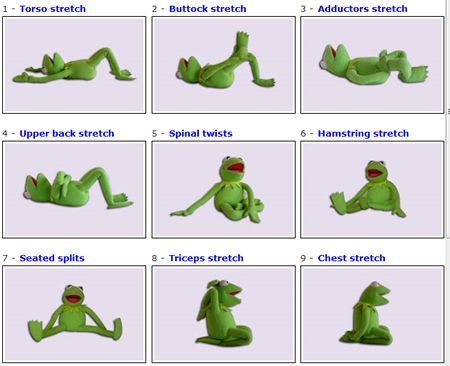
20 SECOND STRETCHING BETWEEN EXERCISES:
The flexibility component of the program generally consisted of interspersing stretching exercises with the strength training movements. The participants experienced excellent results by performing a 20-second stretch for the muscle group just worked. For example, the leg curl exercise was followed by a 20-second static stretch for the hamstrings muscles.
The research has shown that adding stretching exercises to the workout may have duel benefits, enhancing both joint flexibility and strength development. The participants who did static stretches following their strength training exercise had greater increases in hamstrings flexibility and strength than the participants who did strength training exercises only. Because the participants typically took a 1-minute break between exercises, the 20-second stretches did not lengthen the overall workout duration.
STRENGTH TRAINING GUIDELINES:
FREQUENCY
Train two to three days per week on an every-other-day schedule. Taking back-to-back strength training workouts is counterproductive because the muscles do not have sufficient recovery or building time. Two training days per week produce about 90% as much strength and muscle gain as three weekly workouts.
DURATION
Train with one set of 8 to 12 repetitions on each machine. At 6 seconds per repetition a set of strength exercises should take about 50-70 seconds. When the proper weight-load is used, this provides excellent stimulus for strength gains. The Strength Training Circuit should take approximately 25-30 minutes to complete once you know what adjustments and weight you need for each movement or machine. Until then, it could take 45 minutes or so to complete the circuit.

INTENSITY
The weight-load should be heavy enough to fatigue the target muscle group with 8-12 repetitions.
SPEED
Perform all movements slowly, approximately 6 seconds per repetition. Take two seconds to lift the weight-load, and take four seconds to lower the weight-load. Slow training increases the strength building stimulus and reduces the risk of injury.
RANGE
Perform all exercises through a full range of pain-free joint movement. Full-range training ensures greater muscle effort, joint flexibility, and performance power.
PROGRESSION
Gradually increase muscle stress by adding approximately 5% more weight whenever you complete 12 repetitions in good form. Progressive resistance is the key to continued strength development.

CONTINUITY
Proceed from machine to machine, or exercise to exercise in order and in a timely manner. Work the muscles from larger to smaller groups, which aids in efficiency, and provides better overall training effect.
MAINTAIN REGULAR WORKOUTS
Consistency is perhaps the most important variable in developing and maintaining physical fitness. Two or three non-consecutive workout sessions per week on a regular basis are recommended for maximizing muscular fitness.
Well that’s all you need to know. For more ideas on how to create efficient workouts check out these past articles: One And Done
TAKU’s NOTE: Thanks to Dr. Wayne Westcott for allowing me to share his research here on my blog.
Experience the TNT Strength difference with a free workout.
START YOUR FITNESS TRANSFORMATION WITH A
FREE WORKOUT
Complete the form and we'll set up an appointment for you.
Recent Articles
